Habitat Restoration
Norwalk River Watershed AssociationPlant Lists and Winter Seed Sowing Instructions from our Seed Giveaway are HERE.
Building the Pollinator Pathway. NRWA helped create the Pollinator Pathway in 2017 in Wilton and very soon Ridgefield, Norwalk, New Canaan, Weston, Redding, and Lewisboro NY, all the Watershed towns. NRWA served as the fiscal sponsor for the Pollinator Pathway until 2021 when it became an independent non-profit organization. We are proud to announce that it now connects close to 300 towns! The simple message: plant natives, avoid pesticides, and rethink your lawn is really working. It gives people a way to manage their yards to protect water quality and provide safe habitat for birds, pollinators, and people. All of the sites NRWA manages in the watershed are along the Pollinator Pathway.
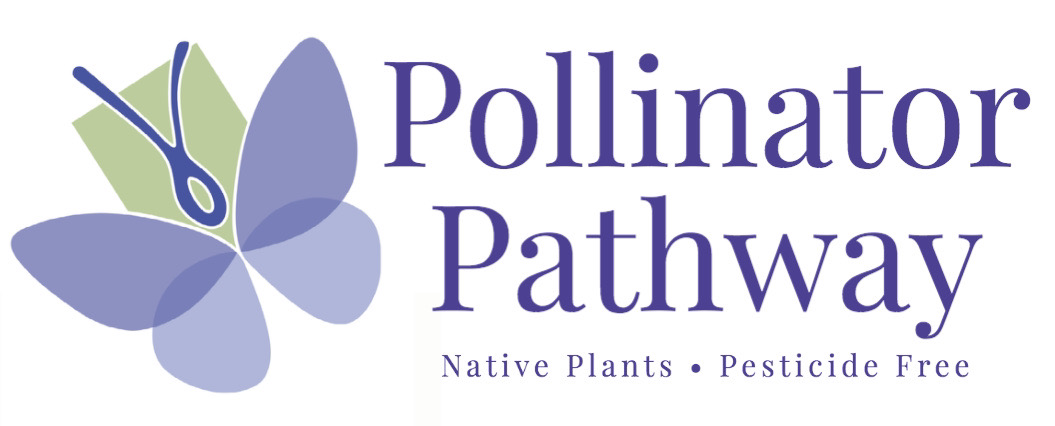
Habitat Restoration Sites NRWA Maintains–Come Visit Them!
The Gardens and Riverbank at Oyster Shell Park in Norwalk
We are working to restore the gardens and riverbank at Oyster Shell Park in South Norwalk by removing invasive plants and planting native plants for wildlife and to protect water quality. The park, a former landfill for the city, is along Norwalk Harbor between the Maritime Aquarium and the Sono Collective mall.
Join us every Wednesday and Saturday mornings to volunteer. For more information and to register, email our volunteer coordinator.
To support our habitat restoration work at Oyster Shell Park, please join the new Friends of Oyster Shell Park group here. When donating, please add Friends of OSP under “Special instructions for seller.”
We thank The Nature Conservancy’s Community Resilience Building Program for supporting this project.
Take a Self-Guided Tour of the Native Pollinator-Friendly Plantings at Oyster Shell Park in Norwalk. Download the guide here.
Also visit the pollinator gardens at Fodor Farm in Norwalk. Download the guide here.
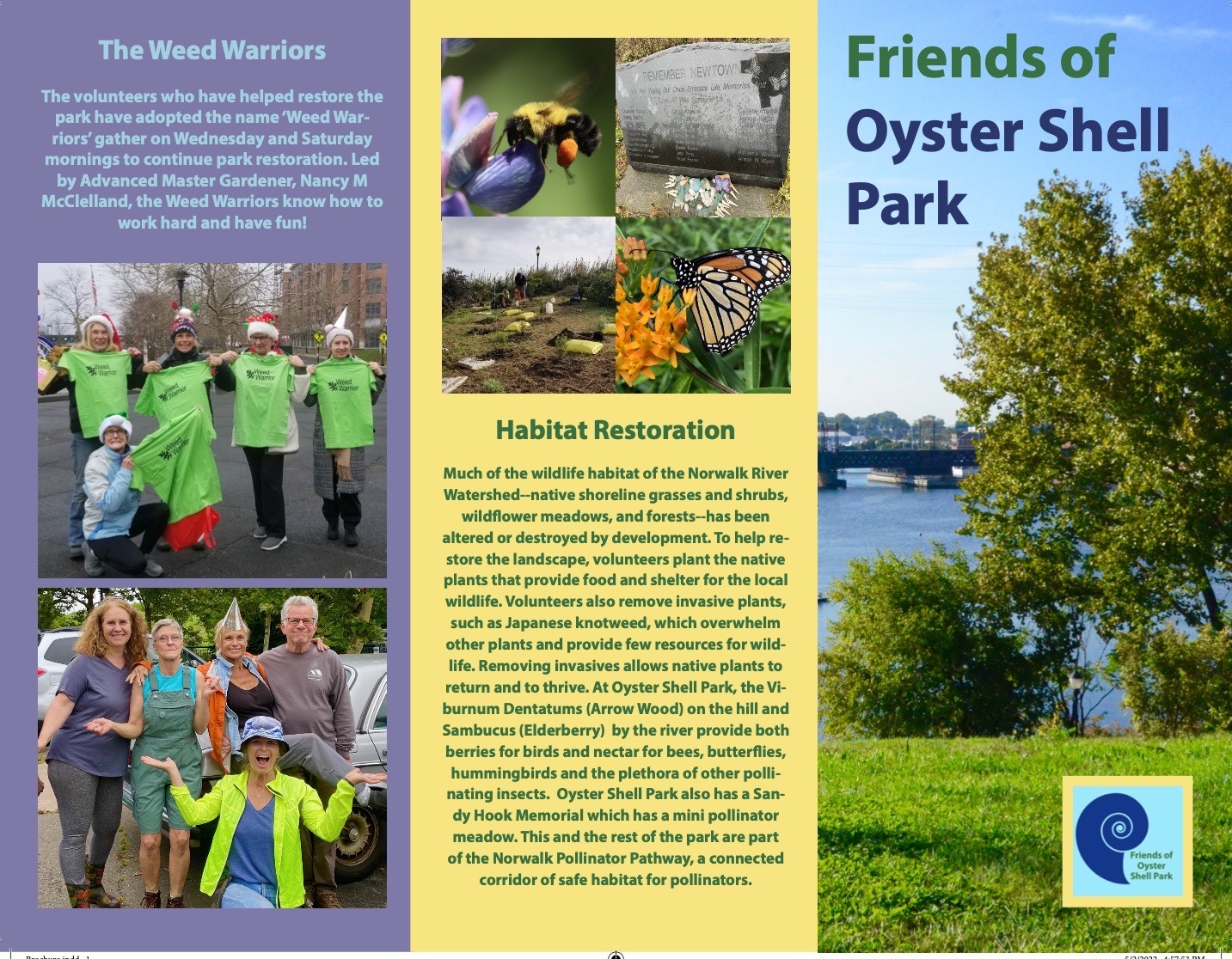
The Tree Canopy and Wetland Edges at Woodward Avenue Park in South Norwalk.
Partnering with the city of Norwalk and through grants from FactSet, REI, the Nature Conservancy’s Community Resilience Building program, and the National Fish and Wildlife Foundation, NRWA has put in over 60 trees and is restoring a wetland area overrun with Australian phragmites to it native spartina grasses, seaside goldenrod, and shrubs, such as groundsel, bayberry, and high tide bush. Come take a look!

Along the Norwalk River Valley Trail (NRVT) between Broad Street & Route 123, Norwalk. This part of the NRVT passes by the Deering-Kellogg Ponds and is one of the most beautiful parts of the river. The Eversource substation looms on the bank near Rt 123, but views of the river and the wildlife present at the ponds make it worth a visit. Because of the construction of the substation and the Route 7 Connector, this area has been badly disturbed and is overgrown with invasive Japanese knotweed. NRWA has been working since 2018 to restore the riverbank. We have covered 32,000 square feet of the banks with recycled billboards, which serve as thick, black tarps. In 2023 and 2024, once the root systems of the knotweed have died, we will begin to take up the tarps and will replant the riverbank with native shrubs, grasses and wildflowers.

Along the Norwalk River Valley Trail (NRVT) at Sharp Hill and Autumn Ridge Road in Wilton.
As new sections of trail go in, land is disturbed—much of it along the Norwalk River or tributaries. NRWA helps to plant these areas before the invasives take root AND to restore older sections, like the parking area at Sharp Hill in Wilton, where we are also collecting data on returning pollinators.

Allen’s Meadow, Wilton.
NRWA and other Wilton Pollinator Pathway partners, led by Wilton resident Joe Bear, are replacing one acre of invasive mugwort with a pollinator meadow at Allen’s Meadow, a park that houses playing fields, community gardens, walking trails, and is an Audubon birding hotspot. Grants from the Connecticut Ornithological Association, Hartford Audubon Society, and Sustainable CT support the project. Joe is avoiding all pesticides and using tarps to smother sections of invasive mugwort for 7 months, 11 months, and 18 months, testing the optimal length of time for eradicating roots systems. Here is Joe’s in-depth, step-by-step plan. We will report results here! A timeline in photographs here.
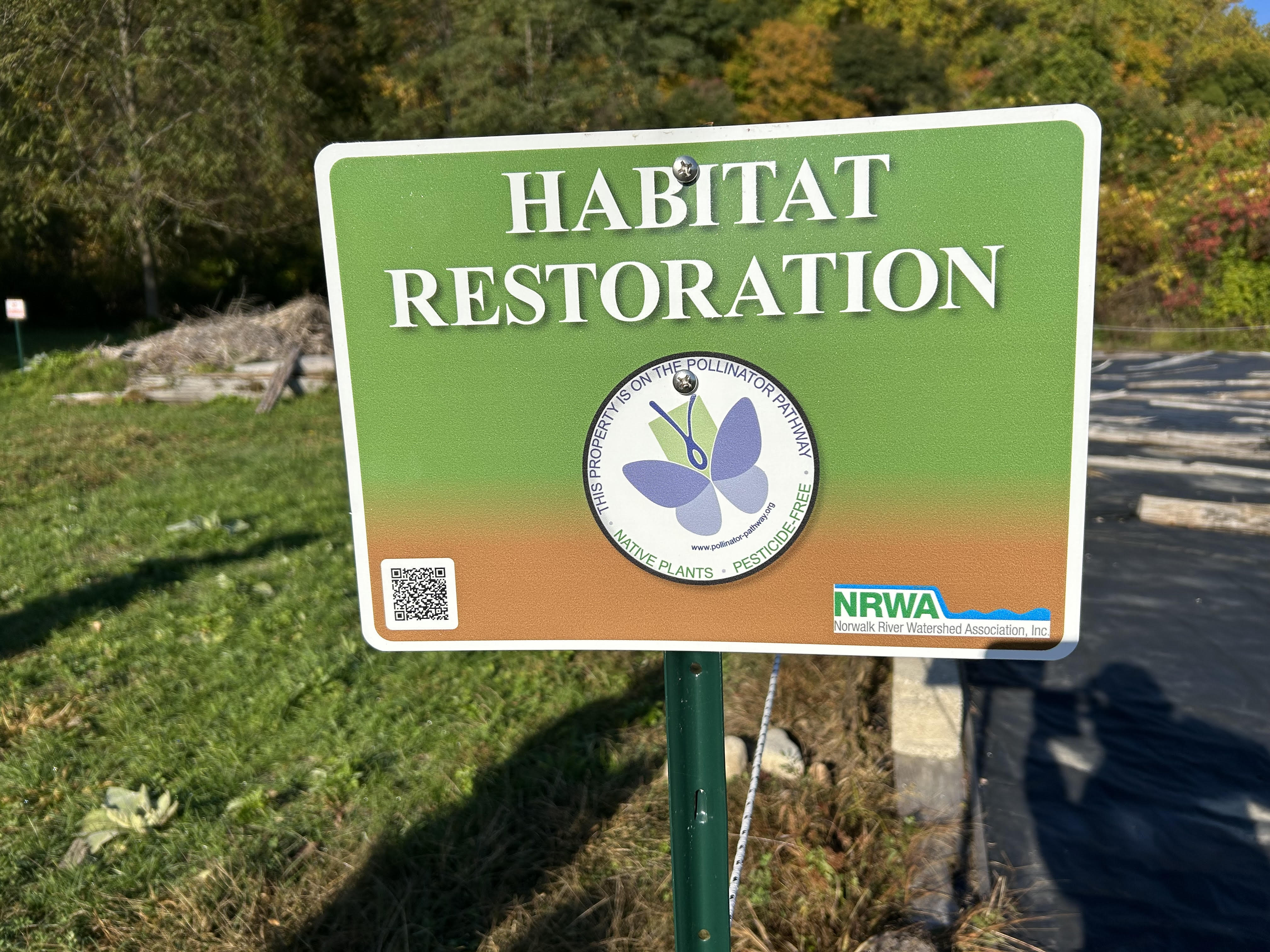
Wilton Land Trust Property Across from the Belknap & Gregg Preserves off Seeley Road, Wilton. This project is beginning in late 2022 and is in partnership with the Wilton Land Trust. The property includes a powerline right-of-way that was cleared by Eversource of its native shrubs in 2019 and covered with crushed stone that contained invasive mugwort seed. Now the area is overgrown with both mugwort and knotweed (see image right). Our goal is to used recycled billboard tarps to smother the invasives from the right-of-way down to the Norwalk River. This is the only area of invasives in a vast and beautiful forest, which the river winds through.

The Ridgefield McKeon Farm Meadow Restoration and Pollinator Population Study Project & Toolkit
Watch a talk about this project here.
Beginning in 2020, NRWA teamed up with the Ridgefield Conservation Commission to work in close collaboration with landscape designer Evan Abramson, Principal of Landscape Interactions, to transform McKeon Farm in Ridgefield into a regional biodiversity hotspot for pollinator species. Abramson, Pollinator Systems Designer, worked with Ridgefield Conservation Commissioner and NRWA board member, Kitsey Snow, to design and install two pollinator meadows–an upland area and a wet meadow–created specifically to benefit rare and specialist pollinators from our region. These are the bees and butterflies that require certain plants to survive, plants that have in many cases become more and more rare in our landscape. Baseline pollinator populations were counted by entomologists at Landscape Interactions before planting and counts will continue for two years after, in order to track any hoped for increases in pollinator diversity and population sizes.
Gardeners, farmers, landscape designers, conservation organizations, and local governments all play a vital role in strengthening, expanding and enhancing regional biodiversity, ecological health, and climate change resilience. On conservation properties, residential landscapes, farms, roadsides, schools, and solar projects, functionally diverse native pollinator habitats can serve as building blocks for linking intact natural areas across a fragmented landscape.
But what to plant, when to mow, where to focus first and how to measure the results? Abramson of Landscape Interactions created a design, mowing plan, and overall strategy for McKeon farm that is now available here for everyone in our watershed to use.
We thank the Anne S. Richardson Fund for supporting this project.
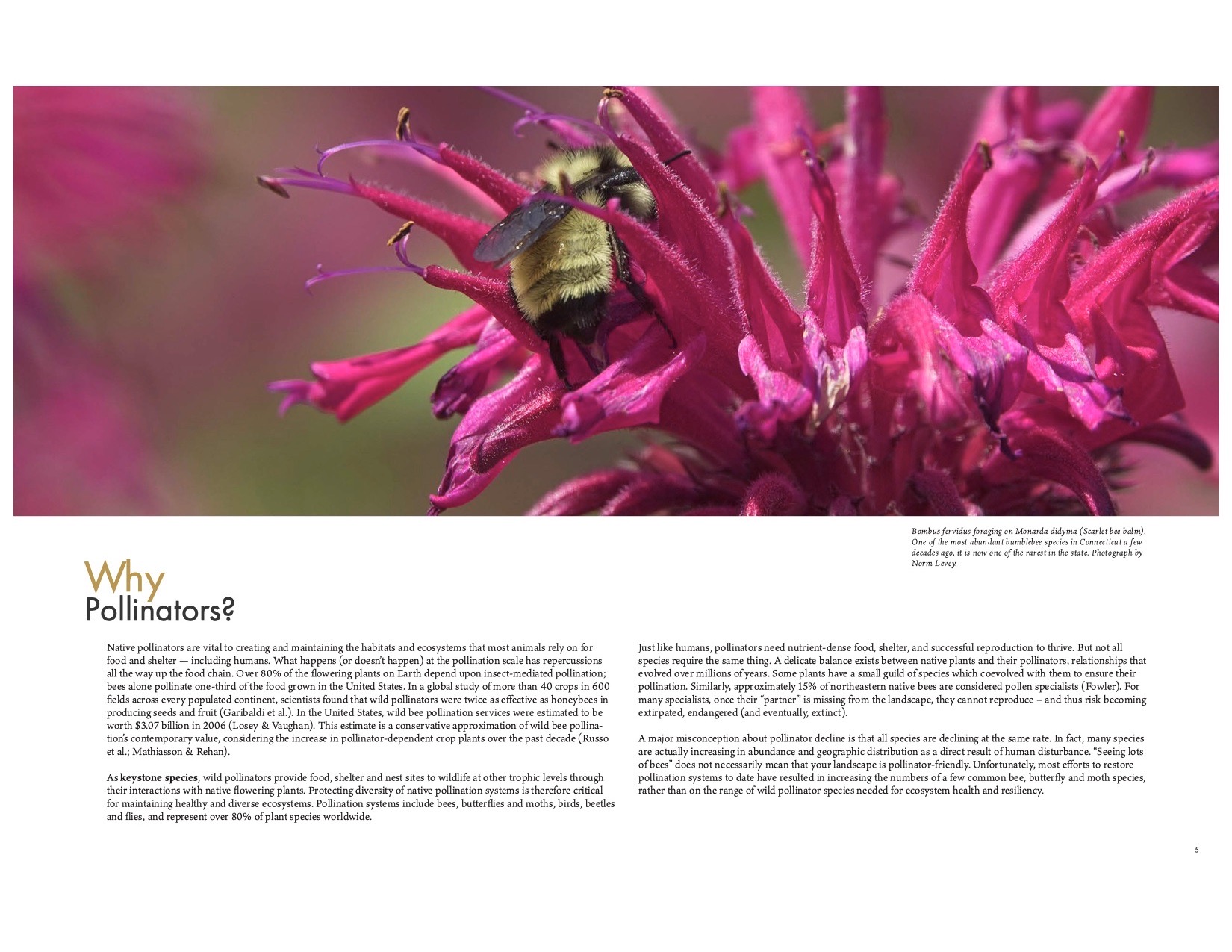
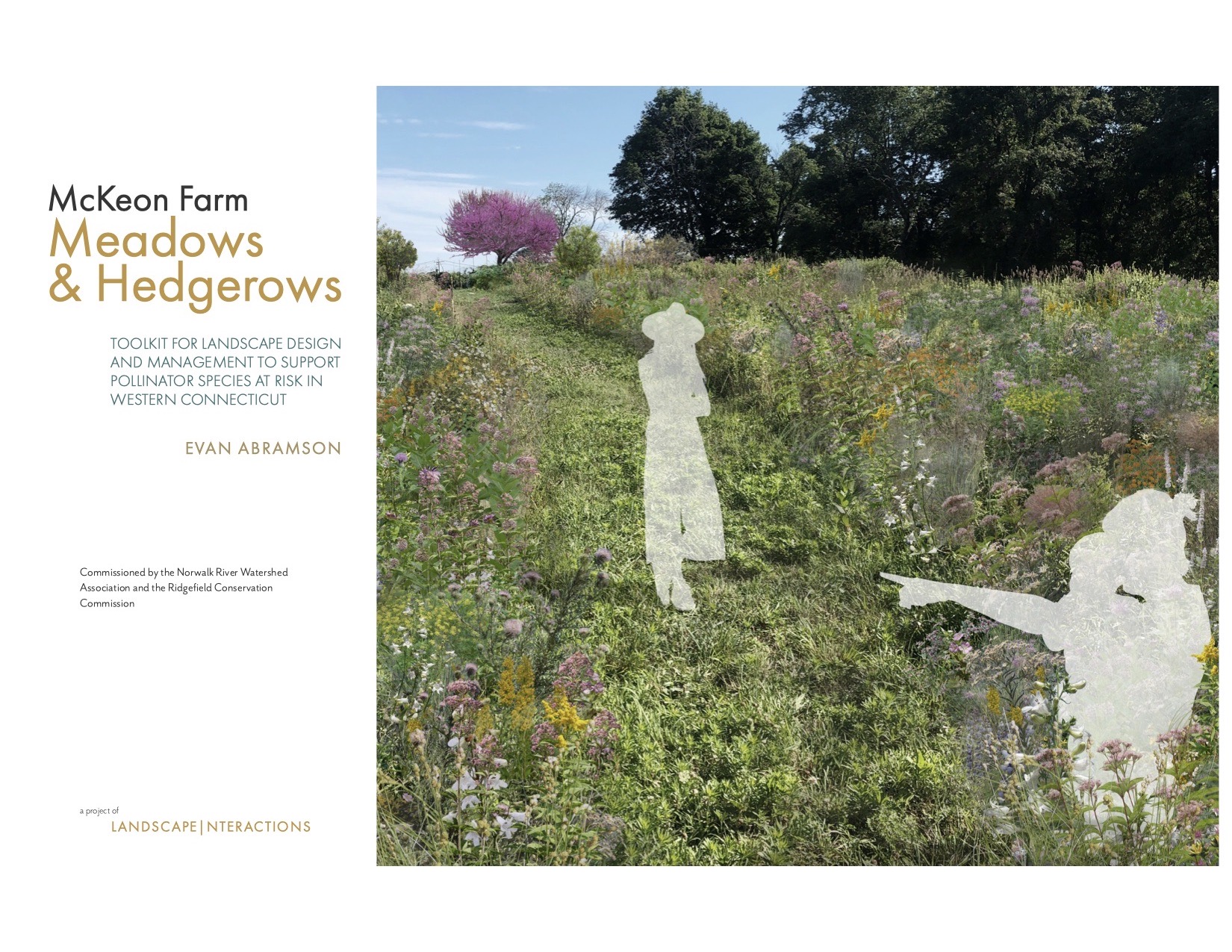
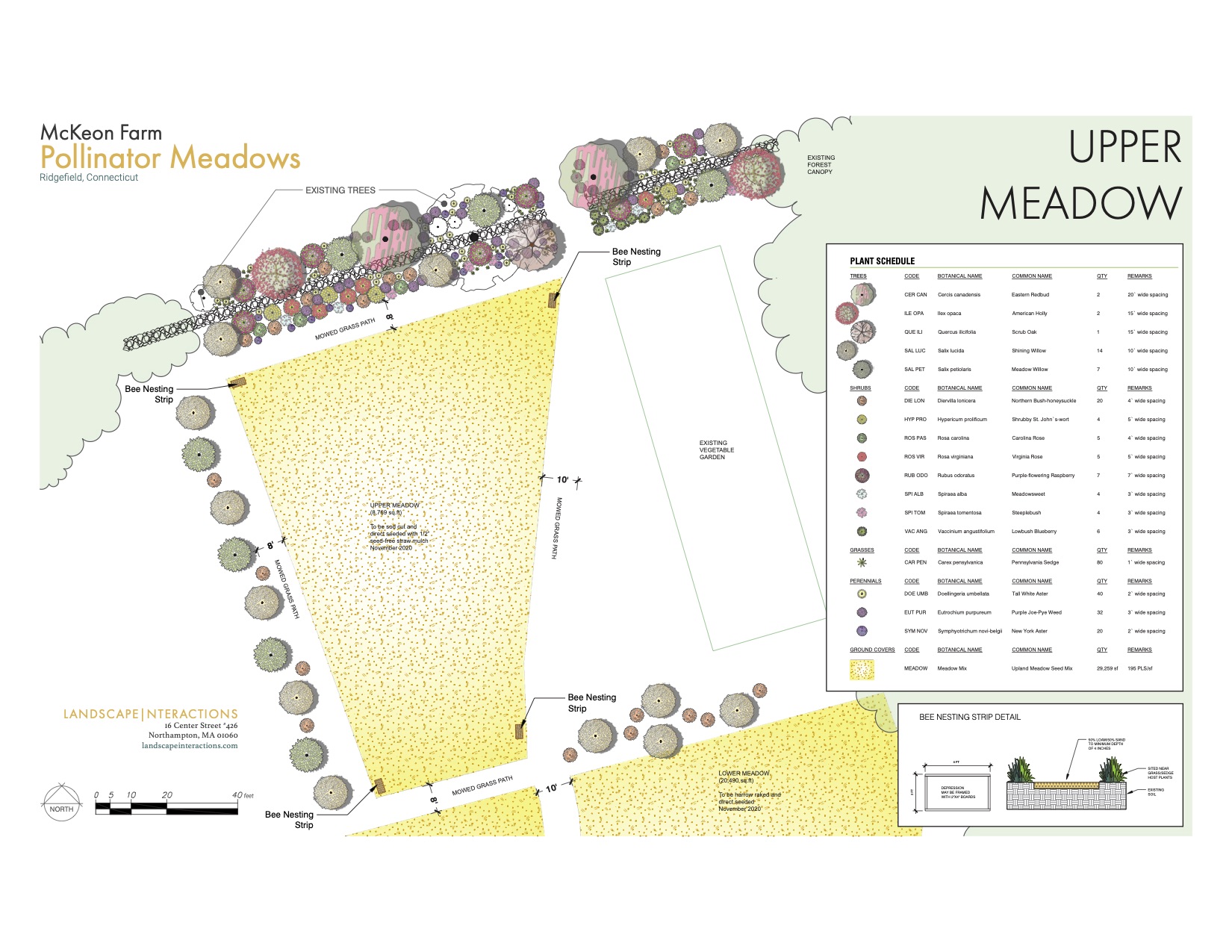
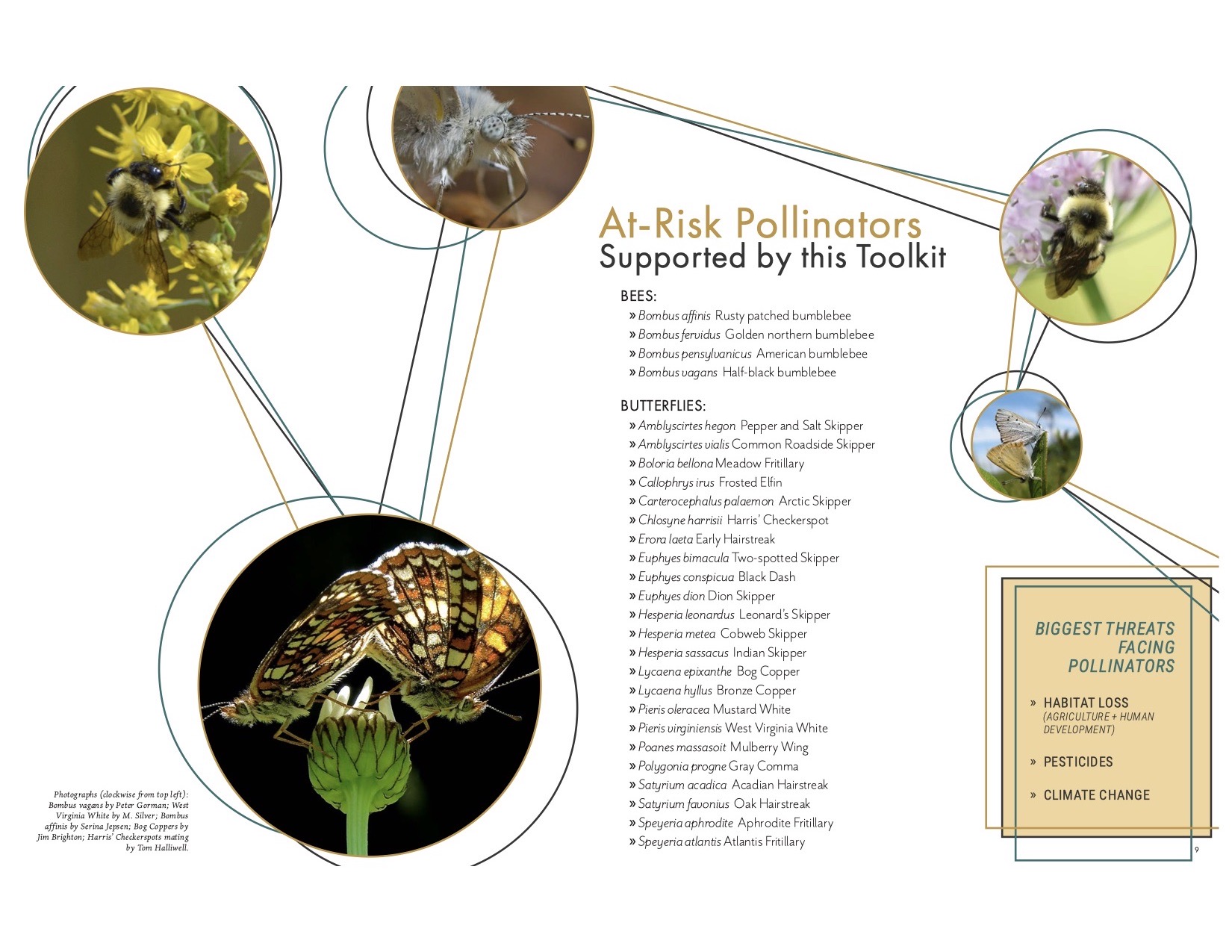
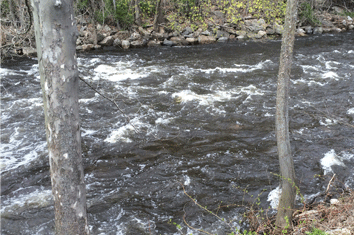
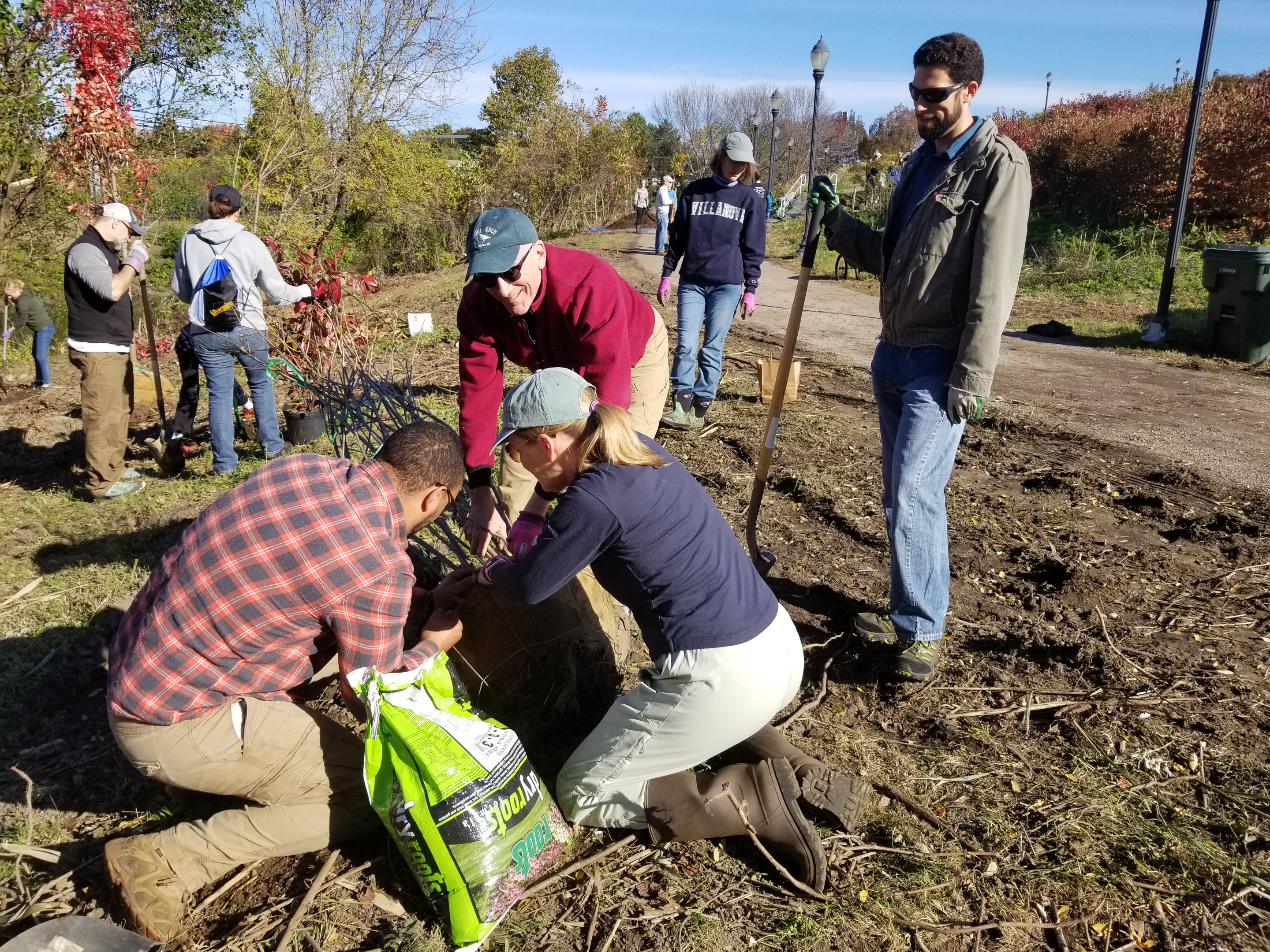
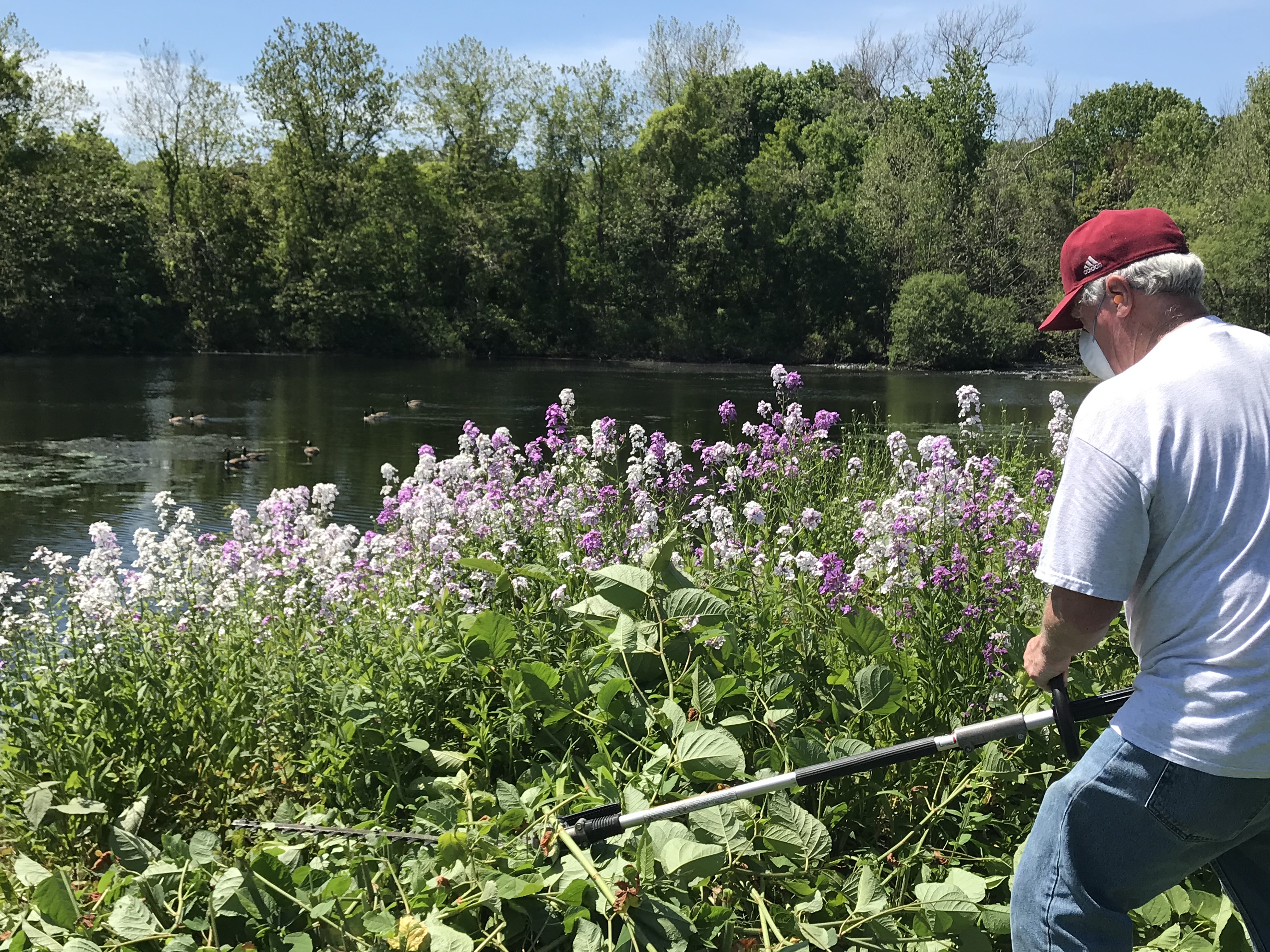

The Challenges in Our Region
Much of the “original habitat” of the Norwalk River Watershed has been altered or destroyed over the past 150 years. Population growth and attendant development, roads, dams, channelization, rip rap, sewer discharges, accidental spills, and nonpoint-source pollution from fertilizers, pesticides, road salt and sand, warming asphalt, and other impacts from human activities have led to the extensive loss and continuing incremental destruction of natural habitats and degradation of water quality. In addition, invasive plants and animal species (e.g., deer) are altering habitats and threatening biological diversity.
To slow this loss of habitat, the Norwalk River Watershed Association, cooperating partners, and volunteers are working to implement and promote habitat restoration where possible. “Habitat restoration” means undoing the past, repairing the effects of pollution, and returning a habitat to a self-sustaining ecosystem. Restoration usually doesn’t focus on a single species but strives to replicate the original natural system. The goal is to help rebuild a healthy, functioning system that works much as it did before it was polluted or destroyed.
Restoration or mitigation activities range from the simple to the complex but typically entail some or all of the following measures:
- Baseline assessments and performance standards, set by the state
- Long-term monitoring and conservation plans,
- The reconstruction of physical and hydrologic conditions through engineered activities, often involving heavy equipment,
- The chemical cleanup of toxic substances, by state Department of Energy and Environmental Protection
- Revegetation of an area through native plantings or natural regrowth
Our watershed is lucky to have both long-term monitoring, carried out by Harbor Watch which publishes reports annually, and a Watershed Action Plan, overseen by the Norwalk River Watershed Initiative which guide our work. The role NRWA plays is through the removal of invasive plant species and revegetation of open space with native plants, especially along the banks of waterways. To get involved, check our events page for restoration projects.
